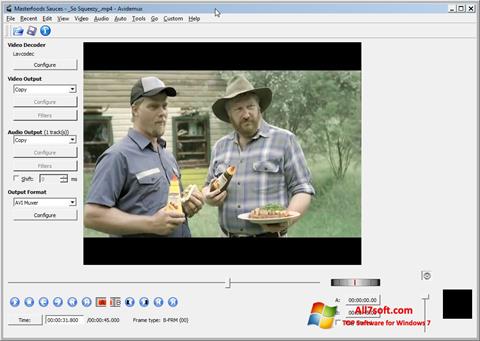


You do this by marking the beginning and end of the footage you want to move, cutting or copying it, moving the playback indicator to the point of the timeline to which you want to move the cut sequence, and then pasting it in there. Once you load all your clips into the timeline, you can then cut and paste footage segments. Reordering the sequence of video is possible, though. You cannot insert a clip somewhere between the beginning and end points of another clip. You load your first clip then you load the next clip, which Avidemux will attach only to the end of the previously loaded clip. The size of this window can be adjusted, and a second window can be added that shows what your footage will look like when a visual adjustment or effect is added to it.Īvidemux does video editing in a strictly linear way. The user interface is pretty much what you'd expect to see in a basic video editor: A timeline that runs along the bottom can be used to move a playback indicator forward and back through your video clip a window in the upper-right shows you the moment in your clip to which the playback indicator on the timeline is set. This desktop program easily and quickly installed from a self-extracting executable file.
#Avidemux review mac os#
Originally a Linux-only program, Avidemux has been ported to Windows and Mac OS X. Rather than trying to create four identical videos, I edited each according to what I perceived were the strengths of the product I was using. I then edited these clips using the tools that each of the four applications supplied. The ZR800 records in the MiniDV video file format, which typically produces a file of approximately 220MB for one minute of video with a resolution of 640-by-480 pixels. To test them, I shot footage of some friends at a golf driving range with a relatively low-end, inexpensive camcorder, the Canon ZR800.


 0 kommentar(er)
0 kommentar(er)
